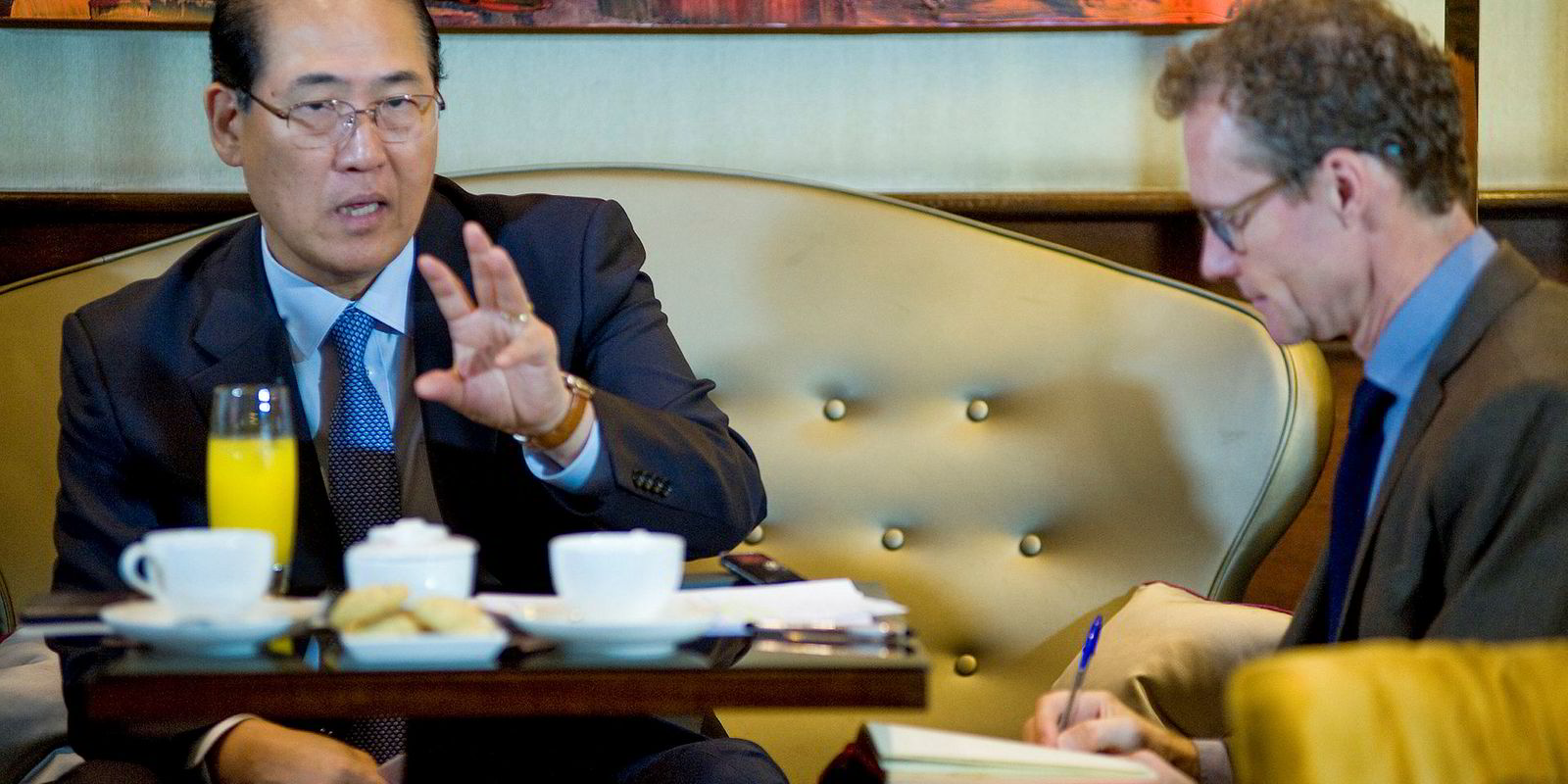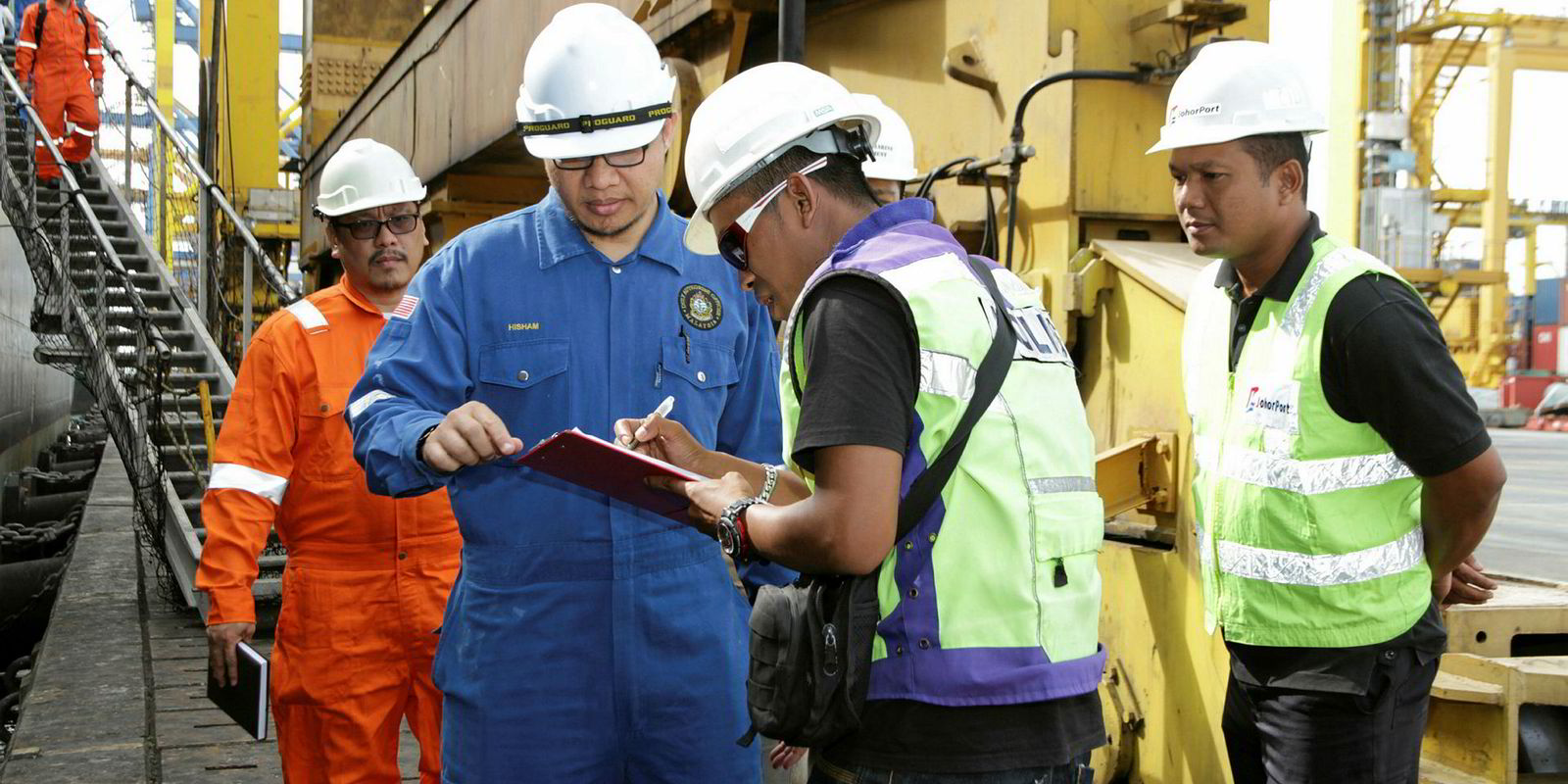The IMO is showing it is serious about meeting its greenhouse gas (GHG) reduction targets by lining up several short-term measures for shipowners at a London meeting next week.
Earlier this year, the regulator set an interim target to improve ship efficiency by 40% by 2030 and it is now under pressure from environmentalists to take action immediately.
While longer-term measures such as alternative fuels and new technology will take decades to develop, there are more immediate options.
On the table at the Marine Environment Protection Committee meeting is a proposal to bring forward the stage-three Energy Efficiency Design Index (EEDI) minimum efficiency targets for containership newbuildings from 2025 to 2022.
Also likely to be agreed is a proposal to strengthen the Ship Energy Efficiency Management Plan, which requires shipowners to prepare operational carbon emission reduction measures.
The additional measures could involve the development of energy consumption performance indicators, such as measuring energy efficiency per service hour, and the adoption of fuel oil reduction strategies.
Strong support
Both ideas have strong industry and flag state backing because they are achievable immediately by updating existing conventions, without going through the IMO’s lengthy lawmaking process.
A submission from Liberia, the International Chamber of Shipping (ICS) and others said: “These measures would require only minimal amendments to existing instruments and could be agreed and implemented relatively quickly, delivering actual GHG reductions without undue delay and moving the industry towards meeting its 2030 target of improving efficiency as an average across the sector by at least 40%.”
Lloyd’s Register said the IMO needs to act keep the ball rolling.
We support the focus on the implementation of short-term measures to ensure that momentum is maintained and action is taken
“We support the focus on the implementation of short-term measures to ensure that momentum is maintained and action is taken,” the classification society commented in a review of next week’s meeting.
However, the proposals are not without controversy. Containerships have been selected for the early phase-in of EEDI targets because current designs already largely meet the requirements, and some experts argue that bringing them forward would not lead to a significant reduction in emissions. Bulkers and tankers, which make up by far the largest portion of the global fleet, have been left out of the proposal.
There is also concern about advancing EEDI targets before the IMO has agreed on a new minimum safe power requirement for vessels.
Reducing the engine rating is a quick, easy way to achieve the targets but could leave ships without enough power to cope with adverse weather.
Lloyd’s Register pointed out that there is a danger the minimum power requirement will not be agreed before the next phase of the EEDI.
LNG is the most widely used alternative fuel in shipping but because it produces methane slip — release of unburnt methane — there is a big question mark over whether it contributes to cutting carbon emissions.
Methane emissions
A European Commission study concluded that hydrocarbon emissions, primarily methane, from LNG-powered ships are even higher than from conventionally fuelled ships.
However, there is a movement at the IMO to seek solutions to reduce methane slip from LNG, particularly at the bunkering stage.
The Liberia-ICS submission suggests that because LNG is immediately available, there is still hope it can contribute to meeting the IMO’s interim goals.
“LNG could make a useful contribution to shipping achieving the initial strategy’s 2030 emission reduction target,” the joint paper said.





